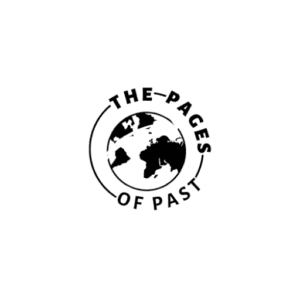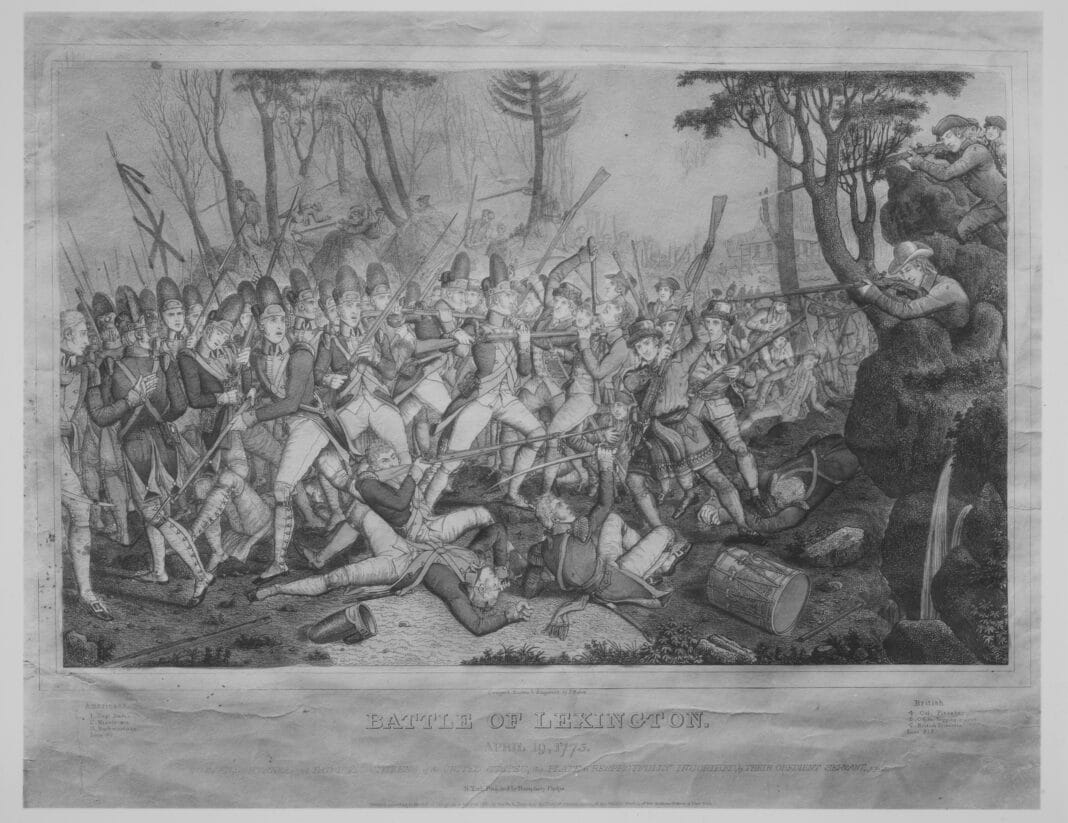Lost Colonies
Uncover the mysteries of the Lost Colonies—exploring their history, theories, and impact. Dive into expert analysis of vanished settlements and forgotten pasts.
1.1 – What Were the Lost Colonies and Their Historical Significance?
Discover the Lost Colonies’ mystery, fate, and impact on history. Explore their significance in shaping early American exploration and settlement.
The “Lost Colonies” represents a fascinating chapter in American history, particularly the mystery surrounding the Roanoke Colony. Established in 1585 on Roanoke Island (modern-day North Carolina), this was the first English settlement in the New World. However, by 1590, when supply ships returned, the settlement had vanished, leaving only the word “CROATOAN” carved into a tree. This discovery sparked endless speculation about the fate of its inhabitants.
The story of the Lost Colonies captivates historians and curious learners alike, touching on exploration, survival, and cultural exchange. Many theories about the colony’s disappearance involve environmental challenges, conflict with Native Americans, or integration into local tribes. Like Sir Walter Raleigh, historical figures hoped for a successful settlement, famously stating, “The New World is full of promise.”
In addition to Roanoke, other lost colonies, such as those founded by the Norse in North America, offer a broader context for understanding the challenges of early colonization. The Lost Colonies contribute to America’s cultural heritage and serve as cautionary tales about the perils faced by early settlers.
This blog will delve into the history of the Lost Colonies, their cultural significance, and the ongoing archaeological discoveries that continue to shed light on their mysteries.
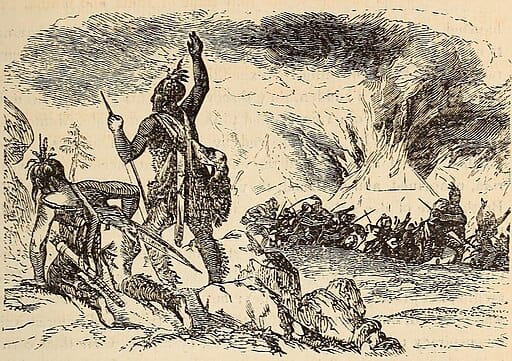
1.2 – Lost Colonies in America’s Early History
Discover the mysterious lost colonies of early America, from Roanoke to vanished settlements, and explore their impact on history, legend, and exploration.
Colonization in America was driven by a blend of ambition, territorial expansion, and the search for religious freedom. Understanding the Lost Colonies involves examining the motivations behind European colonization and the challenges settlers faced.
The story of the Lost Colonies, particularly the Roanoke Colony, symbolizes the uncertainties faced by early settlers. Economic goals, religious aspirations, and complex relationships with indigenous peoples shaped the colonial experience and set the stage for further colonization.
1.2.1 – Why European Powers Sought to Colonize America
European powers, especially England, Spain, and France, sought to explore and colonize the New World for a variety of reasons. Economic interests, such as the desire for new trade routes, valuable resources, and profitable plantations, fueled competition among nations. As Sir Walter Raleigh put it, “The land is rich and fruitful, and the profit opportunities are immense.”
Religious persecution in Europe also pushed many groups to seek refuge in the Americas. Colonies like the Puritans and Quakers fled to escape oppression and establish communities where they could freely practice their faith. This quest for religious freedom played a key role in shaping the cultural and governance structures of several colonies.
1.2.2 – Why Did the Roanoke Colony Disappear?
Founded in 1585, the Roanoke Colony was England’s first attempt at establishing a permanent settlement in North America. Located on Roanoke Island, it was initially populated by around 100 men, led by John White. White returned to England for supplies, but when he returned in 1590, the colony had disappeared, leaving only the word “CROATOAN” carved into a tree.
Various theories about the colony’s disappearance have emerged, including assimilation with local tribes, starvation, or conflict. Some believe the settlers may have attempted to return to England and become lost. The mystery of Roanoke remains one of the most captivating unsolved puzzles in American history.
1.2.3 – How Indigenous Peoples Shaped Early American Colonization
The arrival of European settlers profoundly affected North America’s indigenous populations. Native American tribes, who had lived on the continent for thousands of years, interacted with the newcomers through trade, alliances, and often violent conflict. Colonizers underestimated the resilience and complexity of Native cultures, which led to tragic outcomes for both sides.
For example, the Algonquin tribes around Roanoke initially welcomed the settlers but grew wary as European encroachment increased. This tension reflects the broader struggles between colonizers and indigenous groups throughout North America.
1.2.4 – Colonization for Religious Freedom in Early America
Religion was a significant factor in America’s colonization. Many religious groups sought to create communities based on their beliefs. The Puritans, for instance, established the Massachusetts Bay Colony in 1620, motivated by their desire to build a “city upon a hill” as a model of Christian virtue. Despite facing harsh winters and food shortages, they persevered, leaving a lasting impact on American society.
Religious tensions also led to conflicts and shaped the diversity of beliefs that influenced American identity development. Colonization was not only about territorial conquest but also about the pursuit of spiritual fulfillment and community.
1.2.5 – How Early Colonization Shaped Modern America
The history of colonization in America is a story of ambition, conflict, and faith that ultimately contributed to the formation of modern America. The mystery of the Lost Colonies, particularly Roanoke, symbolizes the uncertainties faced by early settlers. The interplay of economic, religious, and indigenous dynamics played a crucial role in shaping the early colonial experience and laid the foundation for future endeavors in the New World.
1.3 – Lost Colonies of Roanoke Mystery
Uncover the mystery of the Lost Colonies of Roanoke—one of America’s greatest unsolved disappearances. Explore theories and clues behind this vanished settlement.
The story of the “Lost Colonies of Roanoke” is one of the most intriguing mysteries in American history. Located on Roanoke Island, North Carolina, this settlement is often regarded as the first English colony in America. Its fate remains uncertain, captivating historians and enthusiasts alike. Understanding this chapter offers insight into the challenges of early colonization, interactions with Native Americans, and the obstacles faced by settlers.
1.3.1 – Establishing the Roanoke Colony 1585
In 1584, Sir Walter Raleigh received a charter from Queen Elizabeth I to establish a colony in the New World, aiming to find a strategic trade location and new resources. In 1585, Raleigh sent an expedition led by Philip Amadas and Arthur Barlowe to explore the area. Their favorable reports led to the establishment of the Roanoke Colony in 1585, with around 100 men.
The settlers faced harsh weather, limited supplies, and complex relations with local tribes. Despite initial contact with the Algonquin-speaking Croatan tribe, tensions grew. A lack of sustainable food sources worsened the colony’s struggles.
1.3.2 – Why Did the Roanoke Colony Vanish?
In 1587, Raleigh sent a second group of settlers, led by John White, which included families and women. After a few weeks, White returned to England for supplies, encountering a delay of three years due to the Anglo-Spanish War.
Upon his return in 1590, White found the settlement deserted, with the word “CROATOAN” carved into a tree. This led to speculation that the settlers had relocated to Croatoan Island (now Hatteras Island). The disappearance has inspired theories ranging from integration with local tribes to destruction by Spanish explorers.
1.3.3 – Theories on the Fate of the Lost Colonies of Roanoke
Several theories surround the fate of the Roanoke settlers
1.3.3.1 – Did Roanoke Colonists Join Native Tribes?
One theory suggests the settlers may have integrated with the Croatan or other Native American tribes for survival. Accounts from later explorers describe individuals resembling English settlers among Native groups.
1.3.3.2 – Roanoke Colony Starvation and Survival Challenges
Severe food shortages could have led to starvation or death from exposure. The harsh conditions of the North Carolina coastline may have contributed to their demise.
1.3.3.3 – Did Roanoke Colony Fall to Tribal Attacks?
The settlers may have been attacked by hostile tribes. Tensions between settlers and Indigenous groups were common, and the Roanoke colonists could have fallen victim to such violence.
1.3.3.4 – Roanoke Colony Attempt to Return to England
Some suggest the settlers tried to return to England but became lost or perished during the journey.
While the fate of the Lost Colonies remains a mystery, various theories keep the story alive.
1.3.4 – Historical Significance of the Lost Colonies of Roanoke
1.3.4.1 – How the Roanoke Lost Colony Reflects Colonization Challenges
The Lost Colonies of Roanoke highlights the broader challenges of colonization. The story reflects the ambitions and hardships of early settlers, illustrating the risks of pursuing a better life in the New World. John White’s efforts were part of a larger exploration narrative that would shape the future of the United States.
1.3.4.2 – How Sir Walter Raleigh Shaped the Roanoke Colony
Figures like Sir Walter Raleigh were pivotal in establishing these colonies. Raleigh’s enthusiasm for colonization is captured in his quote, “There is no greater treasure than a land full of promise,” reflecting the goals of many early explorers.
1.3.5 – Indigenous Peoples’ Role in the Roanoke Colony’s Story
The interactions between Roanoke settlers and Indigenous tribes are key to understanding early colonization. The Native Americans, such as the Croatans, had rich histories long before European arrival. Initially, they welcomed the settlers, offering assistance. However, misunderstandings and encroachment led to tensions.
These early encounters provide valuable insights into the challenges faced by Indigenous peoples in the face of European colonization.
1.3.6 – Roanoke Colony’s Cultural Impact on American History
The Roanoke Colony’s legacy endures in American culture. The mystery continues to inspire novels, films, and research, serving as a reminder of the complexities of early American history and the narratives that shape our understanding of identity and belonging.
The story of Roanoke is a key part of American heritage, taught in classrooms, featured in documentaries, and discussed in historical circles. It reflects the settlers’ ambitions and raises questions about survival, adaptation, and the intertwined fates of colonizers and Indigenous peoples.
1.3.7 – The Lost Colonies of Roanoke
The “Lost Colonies of Roanoke” represents a pivotal moment in early American history, filled with ambition, mystery, and the quest for survival. While the fate of the settlers remains unknown, their story reflects the broader themes of exploration and colonization that shaped the United States. The unanswered questions surrounding Roanoke continue to spark curiosity, ensuring that the tale remains alive in the public consciousness.

The Map of the Entire Coast of Virginia by Theodor de Bry – Top Right Corner Detail
1.4 – Forgotten colonies of early America
Uncover the forgotten colonies of early America—lost settlements that shaped history but vanished over time. Explore their mysteries and lasting impact.
The story of the Lost Colony of Roanoke remains one of the most enigmatic chapters in American history, but it is far from the only tale of failed settlements and mysterious disappearances. Throughout early colonization, various groups attempted to establish thriving communities in the New World, only to vanish under puzzling circumstances. These lesser-known “lost colonies” offer insight into the challenges faced by early settlers and their interactions with Indigenous peoples.
1.4.1 – The Lost Colony of Jamestown
Founded in 1607, Jamestown in Virginia was the first permanent English settlement in North America. Although it survived, it faced significant hardships, including food shortages, conflicts with local tribes, and disease, leading to high mortality rates. The 1609 resupply mission was stranded by a storm, resulting in the “Starving Time” when only 60 of the original 500 colonists survived.
The mystery of Jamestown centers on the fate of its settlers, especially during the Starving Time, where reports suggest that desperate colonists resorted to cannibalism. Archaeological digs have uncovered human remains, adding to the chilling questions about their survival tactics.
1.4.2 – The Lost Colony of Darien and its failure in Panama
In the late 17th century, Scotland attempted to establish a colony on the Isthmus of Panama, hoping it would become a major trading hub. The first expedition set sail in 1698, but harsh conditions, disease, and conflicts with local tribes led to the colony’s collapse.
The Darien Scheme serves as a reminder of the difficulties European powers faced when trying to establish colonies in unfamiliar territories.
1.4.3 – The Lost Colony of Popham
The Popham Colony, founded in 1607 in present-day Maine, lasted only a single winter. Despite efforts to create a foothold for future colonization, the settlers faced harsh weather, resource shortages, and a dwindling population. By 1608, the colony was abandoned, with many returning to England.
The brief existence of the Popham Colony highlights the fragile nature of early colonization efforts, compounded by a harsh climate and limited supplies.
1.4.4 – The Lost Colony of New Sweden
In the early 17th century, Swedish settlers established New Sweden along the Delaware River. While the settlement thrived initially, tensions with Dutch settlers escalated, leading to Dutch control in 1655.
Though New Sweden’s political rule was short-lived, its cultural legacy endures, particularly through the introduction of log cabins, a hallmark of American architecture.
1.4.5 – The Mystery of the Lost Colony of San Miguel de Gualdape
Established in 1526 by Spanish explorer Lucas Vázquez de Ayllón, San Miguel de Gualdape was the first European settlement in present-day South Carolina. The colony faced immediate challenges, including illness, food shortages, and tensions with local tribes. Within a year, it was abandoned, and the survivors returned to Spain.
The mystery of San Miguel de Gualdape lies in its brief existence and the limited documentation surrounding it, reflecting the difficulties early European colonizers faced in North America.
1.4.6 – Common challenges in early American colonization
Common challenges emerged across these examples:
1.4.6.1 – Harsh climates in early American colonies
Settlers faced unfamiliar climates, wildlife, and geographical features, making survival difficult.
1.4.6.2 – Colonist-Indigenous conflicts during early colonization
Interactions with Native American tribes often led to misunderstandings and violence, escalating tensions.
1.4.6.3 – Resource shortages in early American colonies
Shortages of food, shelter, and essential supplies frequently doomed colonization efforts.
Historian James Axtell observed, “History is not a mere chronicle of events, but the story of human relationships.” The interactions between settlers and Indigenous peoples played a crucial role in shaping the outcomes of these colonies.
1.4.7 – How lost colonies shaped early American exploration
The stories of lost colonies are cautionary tales, reminding us of the challenges early settlers faced in unfamiliar territories. Although they vanished, the lessons from these colonization attempts continue to resonate today.
These lost colonies are an essential part of American history, offering insight into the complexities of exploration and the resilience of those who sought new beginnings.
1.4.8 – Understanding the challenges of early American colonies
The mystery of other lost colonies reflects the trials and tribulations of early settlers. Whether it was Roanoke, Popham, or San Miguel de Gualdape, each lost colony contributes to the broader narrative of American history. Their legacies remind us of the costs of colonization and the stories of those who sought to establish a new world.
1.5 – Impact of Lost Colonies on Native American Societies
Discover how lost colonies shaped Native American societies, influencing their cultures, economies, and lands through conflict, trade, and adaptation.
The establishment and failure of the “Lost Colonies” had profound effects on Native American populations, deeply altering their cultures and societies. European colonization significantly impacted Indigenous communities, leading to conflicts, land loss, and long-term social changes.
1.5.1 – First European-Native American Interactions and Trade Goods
When European settlers arrived, the first interactions with Native American tribes were often characterized by trade and cultural exchange. Indigenous groups quickly adopted European goods, such as metal tools and firearms, which became valuable assets in their societies.
1.5.1.1 – How David M. Gammel Describes Native American Adaptation to Colonization
Historian David M. Gammel notes, “Contact between Native Americans and Europeans was marked by both cooperation and conflict.” For instance, the Powhatan Confederacy traded food and furs with English settlers in exchange for metal tools, illustrating how Native Americans adapted their economies to incorporate new goods.
1.5.2 – Native American Land Disputes and European Colonization
European settlements expanded, and cooperation shifted to conflict. Settlers encroached on Indigenous lands, leading to land disputes and violent confrontations. The European view of land ownership, which often dismissed Native American land rights, heightened tensions.
One notable conflict was the Pequot War (1636-1637), in which English settlers, allied with rival tribes, decimated the Pequot Nation, causing severe loss of life and territory.
1.5.2.1 – Jill Lepore’s Analysis of the Pequot War and Colonial Impact
Historian Jill Lepore observes, “The Pequot War established a pattern of violence and dispossession that would define colonial and Indigenous relations for centuries.” The war, like others, disrupted traditional Indigenous ways of life.
1.5.3 – How European Diseases Contributed to Native American Decline
European colonization also brought diseases like smallpox, influenza, and measles, which devastated Native American communities. Lacking immunity, Indigenous populations faced mortality rates as high as 90% in some areas.
1.5.3.1 – Charles C. Mann’s View on the Devastation Caused by European Diseases
Historian Charles C. Mann captures the severity of this loss: “In the wake of the colonizers, entire communities vanished.” The widespread death weakened tribal structures, disrupting social cohesion and leaving Native communities more vulnerable to settler encroachment.
1.5.4 – The Cultural Transformation of Native Americans Through Colonization
Colonization brought changes to Native American societies, as European agricultural practices, trade goods, and religions influenced Indigenous cultures. Some tribes incorporated European elements, which led to the erosion of traditional practices.
For example, the Iroquois Confederacy experienced shifts in governance and military practices as they engaged with European powers.
1.5.4.1 – How the Iroquois Confederacy Adjusted to European Colonization
Historian Barbara Graymont writes, “The Iroquois adapted to the new circumstances, demonstrating resilience while also experiencing significant cultural shifts.”
1.5.5 – Forced Displacement of Native American Tribes During Colonization
The most significant impact of the “Lost Colonies” on Native American populations was widespread displacement and land loss. Settlers appropriated Indigenous lands, pushing Native peoples further west. This expansion resulted in violent confrontations, coerced treaties, and forced removals, such as the Trail of Tears.
The loss of ancestral land disrupted the cultural and spiritual connection that Native communities had with their territories, instilling a deep sense of grief and loss that persists today.
1.5.6 – Lasting Effects of European Colonization on Native American Communities
The legacy of colonization continues to affect Native American populations. The loss of land, population declines, and cultural disruptions contributed to ongoing cycles of poverty and disenfranchisement. Today, many Native American communities are working to reclaim their cultural heritage and land rights.
In recent years, there has been a resurgence in efforts to preserve Indigenous languages, traditions, and governance structures.
1.5.6.1 – Wilma Mankiller on Native American Persistence and Success Despite Colonization
Indigenous leader Wilma Mankiller stated, “The secret of our success is that we never gave up.”
1.5.7 – How the Lost Colonies Shaped Native American History and Culture
The “Lost Colonies” had a lasting impact on Native American populations, reshaping their cultures and futures. Although some initial interactions involved cooperation, the overall narrative is one of conflict, displacement, and loss. Acknowledging this history is essential for understanding the enduring effects of colonization on Indigenous peoples.
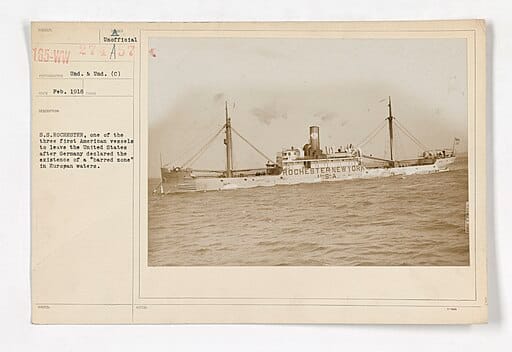
1.6 – Archaeological Discoveries of Lost Colonies in America
Uncover the secrets of lost colonies in America through archaeological discoveries, revealing hidden histories, vanished settlements, and untold stories of the past.
The mystery of the “Lost Colonies” has intrigued historians, archaeologists, and enthusiasts for centuries. From the vanishing of the Roanoke Colony to other lesser-known settlements, archaeological discoveries have been crucial in understanding these early American colonies. This section explores key findings, ongoing research, and how they shed light on the “Lost Colonies.”
1.6.1 – Roanoke Colony archaeological discoveries and mystery
The Roanoke Colony, established in 1585 on Roanoke Island, remains the most famous of the “Lost Colonies.” Sponsored by Sir Walter Raleigh, the colony was intended as a base for English settlement in the New World. However, when Governor John White returned from England in 1590, he found the settlement deserted with no clear explanation.
Archaeological efforts have focused on uncovering the truth behind this disappearance. In 1998, Dr. Mark Horton’s team discovered evidence of a fort, likely belonging to the Roanoke colonists. Artifacts, including pottery shards, tools, and remnants of structures, suggest the settlers engaged in agriculture and trade with local Native American tribes, corroborating John White’s account of peaceful interactions.
1.6.2 – Theories about Roanoke colonists’ fate and archaeological evidence
The fate of the Roanoke settlers has long been debated. One theory proposes they assimilated with nearby Native American tribes, such as the Croatoan. In 2015, archaeologists explored Croatoan Island (now Hatteras Island) for evidence of the Roanoke colonists. They found European pottery and tools, lending support to the theory of integration.
The word “CROATOAN,” carved into a tree by one of the colonists, also points to this connection. Ongoing research into these theories continues to draw interest as archaeologists aim to uncover more about this pivotal moment in American history.
1.6.3 – Jamestown and its connection to the Lost Colonies through archaeology
While Roanoke remains the most infamous, Jamestown (founded in 1607) offers valuable insights into early colonial life. Excavations at Jamestown have uncovered numerous artifacts, including fortifications, domestic items, and evidence of interactions with Native Americans.
In 2013, archaeologists uncovered a cache of 17th-century artifacts, including a silver cup and various tools, shedding light on settlers’ daily lives and their interactions with the Powhatan Confederacy. These discoveries underscore how archaeology can reveal the social, economic, and political dynamics of early colonial life.
1.6.4 – Archaeological research on lesser-known Lost Colonies in America
Beyond Roanoke and Jamestown, other lesser-known colonies warrant attention. For instance, the Popham Colony in Maine (founded in 1607) was abandoned after only a year. Excavations at the site have revealed a fortified settlement, evidence of trade with local tribes, and remnants of a shipyard, highlighting the challenges early colonizers faced.
Similarly, the Dare County Colony, an attempt to settle the Outer Banks in the late 1600s, has been the subject of archaeological research. While fewer artifacts have been found, ongoing investigations continue to explore the lives of those who struggled in this harsh environment.
1.6.5 – LiDAR and modern tech uncovering Lost Colonies sites
Advancements in technology have significantly improved archaeological research. Techniques like ground-penetrating radar, aerial photography, and Geographic Information Systems (GIS) allow researchers to identify potential sites without extensive excavation. For instance, a recent study using LiDAR technology uncovered possible sites of the “Lost Colonies” hidden beneath forest canopies, opening new research opportunities.
Collaboration with Indigenous communities has also become essential. These partnerships foster respect for the land and offer valuable cultural insights that inform archaeological interpretations. Understanding the historical context of these findings is crucial, and engagement with Native communities enhances archaeological research.
1.6.6 – Exploring historical context in the search for Lost Colonies
The search for the “Lost Colonies” is not just an academic pursuit; it also holds significant relevance today. The legacy of colonization continues to impact Indigenous communities, and understanding these interactions is key to fostering dialogue and healing.
1.6.6.1 – Dr. David Hurst Thomas’ insights on Lost Colonies and archaeology
Dr. David Hurst Thomas, an archaeologist, notes, “History is never just the past; it is part of the living present.”
1.6.7 – Summary of archaeological findings on the Lost Colonies mystery
Archaeological discoveries related to the “Lost Colonies” shed light on the complexities of early American settlements, their interactions with Native American tribes, and the enduring mysteries of their fates. From the search for the Roanoke colonists to the excavation of Jamestown, these investigations reveal not only the settlers’ struggles but also the resilience of Indigenous peoples. As research evolves, it is essential to honor the stories of all those involved in this chapter of American history.
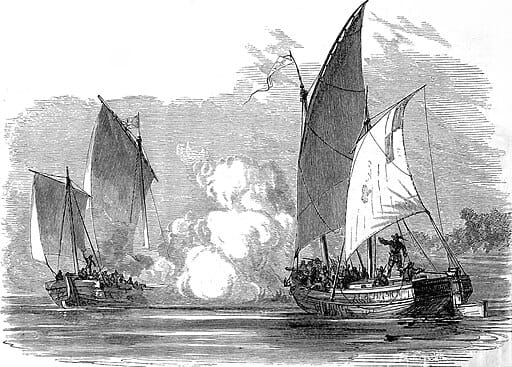
Title: A Popular History of the United
States: From the First Discovery of the Western Hemisphere by the Northmen to the End of the First Century of the Union of the States; Preceded by a Sketch of the Prehistoric Period and the Age of the Mound Builders,
Year:1876 (the 1870s)
Authors: William Cullen Bryant (1794-1878), Sydney Howard Gay (1814-1888) Subjects: History of the United States
Publisher: New York: Scribner, Armstrong, and Company Contributing Library: Lincoln Financial Foundation Collection
Digitizing Sponsor: The Institute of Museum and Library Services through an Indiana State Library LSTA Grant.
1.7 – How the Lost Colonies Shaped American Identity
Discover how the Lost Colonies influenced American identity, shaping cultural narratives, resilience, and the nation’s early foundations through history and legend.
The “Lost Colonies” of North America, particularly the Roanoke Colony, have fascinated historians and the public for centuries. The mystery of their disappearance and the remnants of these early settlements are crucial in understanding American identity, cultural evolution, and the complex interactions between colonizers and Indigenous peoples. This section explores their legacy and cultural significance, emphasizing their impact on modern America and the ongoing interest they generate.
1.7.1 – Why the Roanoke Colony Mystery Continues to Fascinate Historians
The Roanoke Colony, established in 1585, symbolizes the challenges faced by early settlers in America. The unexplained fate of the colonists has intrigued both historians and the public, becoming a focal point in American history. Roanoke has been featured in literature, film, and folklore, cementing its place in discussions about early American history. As historian Dr. Ivor Noël Hume stated, “Roanoke is the first great mystery of America, and the allure of that mystery never fades.”
This fascination reflects broader themes of survival, adaptation, and the unknown, making Roanoke a subject of ongoing study across disciplines such as archaeology, anthropology, and literature. The persistent interest in Roanoke is evident in numerous books, documentaries, and educational programs that explore its historical significance.
1.7.2 – How the Lost Colonies Influenced American National Identity
The “Lost Colonies” are central to understanding the broader narrative of American colonization and the formation of national identity. Early settlement attempts by European powers, particularly England, highlight the ambitions and challenges faced by settlers. The story of the Roanoke colonists resonates with themes of migration, resilience, and cultural exchange.
These stories underline the complexity of American identity, shaped by both colonizers and Indigenous populations. They raise important questions about heritage, belonging, and the consequences of colonization.
1.7.2.1 – Baldwin’s Words on the Lasting Impact of Historical Colonies
Writer James Baldwin noted, “Not everything that is faced can be changed, but nothing can be changed until it is faced.” The legacy of the Lost Colonies invites reflection on historical narratives and their impact on modern society.
1.7.3 – How the Lost Colonies Shaped American Folklore and Literature
The mystery of the “Lost Colonies” has inspired numerous works of fiction and folklore, embedding these stories in American culture. From tales of exploration to Native American encounters, narratives about Roanoke and other early settlements have become key elements in American storytelling.
Authors like Nathaniel Hawthorne and Tony Horwitz have explored these themes, examining the struggles faced by early settlers. Hawthorne famously remarked, “The past is but the shadow of the present,” emphasizing how historical narratives shape our understanding of identity and culture.
This ongoing fascination encourages the exploration of literature and resources that examine the lives of early settlers and their interactions with Indigenous peoples, connecting historical events with broader themes of struggle and survival.
1.7.4 – How Roanoke and the Lost Colonies Impact Modern American Culture
The legacy of the “Lost Colonies” also resonates in modern American culture. Historical sites, museums, and reenactments dedicated to Roanoke and other early colonies serve as reminders of this pivotal period. Events and festivals celebrating early colonization offer communities the chance to reflect on their past and foster a sense of connection.
The study of the Lost Colonies continues to influence discussions about race, identity, and cultural heritage in America. By exploring the impacts of colonization on Native American populations and early settlers, we gain a deeper understanding of how history shapes contemporary social dynamics.
1.7.5 – Educational Resources for Studying the Lost Colonies in America
Given the rich history of the “Lost Colonies,” educational resources play a vital role in disseminating knowledge. Teachers and educators use materials that engage students with interactive learning experiences, enabling them to connect the past with the present.
Online resources, documentaries, and historical databases provide valuable insights into early settlers’ experiences and their interactions with Indigenous peoples. These resources help foster a well-rounded understanding of early American history and are essential for expanding knowledge across diverse audiences.
1.7.6 – How the Lost Colonies Shaped Modern American Culture
The legacy and cultural significance of the “Lost Colonies” remain a testament to the complexities of American history. From the mystery of Roanoke to the broader themes of identity and colonization, these stories continue to engage contemporary audiences and invite exploration. As interest in the Lost Colonies persists, it encourages reflection on how history shapes our understanding of modern society.
1.8 – Summarizing the History of the Lost Colonies and Their Legacy
Discover the history of the Lost Colonies, their struggles, and their lasting impact. Explore how these early settlements shaped America’s legacy and historical narrative.
The “Lost Colonies” represents a fascinating chapter in American history, illustrating the challenges of early colonization and its lasting effects on both settlers and Indigenous populations. By exploring these colonies, particularly Roanoke, we uncover themes of survival, mystery, and cultural exchange that resonate with contemporary discussions on identity and heritage.
In today’s digital age, many turn to online resources to explore these historical events, seeking insights into the lives of early settlers, archaeological discoveries, and interactions with Native Americans. Accessible educational materials, documentaries, and interactive content are essential for deepening understanding of this period.
Studying the “Lost Colonies” not only helps unravel historical mysteries but also invites reflection on the ongoing impact of colonization in modern society. This exploration enriches our knowledge and sparks thoughtful discussions about heritage and identity, making the study of the “Lost Colonies” valuable for learners of all ages.
